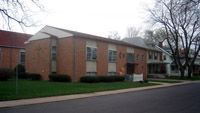You know those anti-depression drugs like Zoloft and Prozac? A new study finds that they “work no better than a placebo for the majority of patients with mild or even severe depression,” according to an article published today in The Times (London):
The study, by Irving Kirsch, from the Department of Psychology at the University of Hull, is the first to examine both published and unpublished evidence of the effectiveness of selective serotonin reuptake inhibitors (SSRIs), which account for 16 million NHS prescriptions a year. It suggests that the effectiveness of the drugs may have been exaggerated in the past by drugs companies cherry-picking the best results for publication.
The study was published by the Public Library of Science (PLoS) and is titled “Initial Severity and Antidepressant Benefits: A Meta-Analysis of Data Submitted to the Food and Drug Administration.” Their published conclusion is, “Drug–placebo differences in antidepressant efficacy increase as a function of baseline severity, but are relatively small even for severely depressed patients. The relationship between initial severity and antidepressant efficacy is attributable to decreased responsiveness to placebo among very severely depressed patients, rather than to increased responsiveness to medication.”
Why does this matter? Because there are serious side effects to SSRIs, not the least of which can be suicidal or homicidal thoughts. Karen McCarron had just come off anti-depressants when she killed her autistic daughter, and NIU shooter Steve Kazmierczak had stopped taking Prozac a couple weeks before he killed five people and himself. There are lots of other examples.
The argument has been that the benefits of SSRIs outweigh the risks. But this study calls into question the efficacy of these anti-depression drugs, which undermines that argument. If SSRIs are no better than a placebo for most patients, then, as the researchers concluded, “there is little reason to prescribe new-generation antidepressant medications to any but the most severely depressed patients unless alternative treatments have been ineffective.”

 There will be a joint meeting of the Peoria City Council and Peoria Board of Education on Feb. 28 at 3:00 p.m. in City Hall, room 404, to discuss “the enhancement of communities surrounding new schools.” The agenda will be:
There will be a joint meeting of the Peoria City Council and Peoria Board of Education on Feb. 28 at 3:00 p.m. in City Hall, room 404, to discuss “the enhancement of communities surrounding new schools.” The agenda will be: Neighbors had steeled themselves for a vigorous debate on a church expansion proposal Thursday night, but the issue was defused when the church withdrew its special use request.
Neighbors had steeled themselves for a vigorous debate on a church expansion proposal Thursday night, but the issue was defused when the church withdrew its special use request.